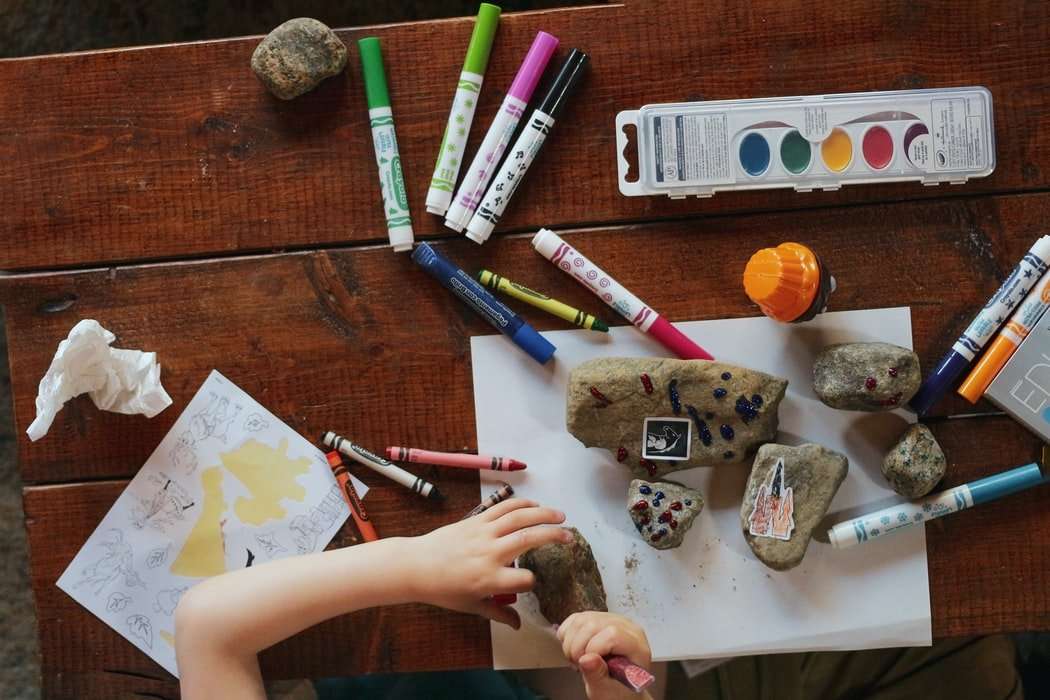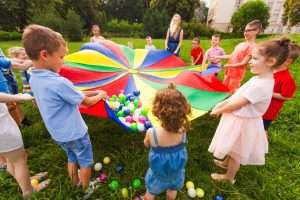[vc_row padding_top_multiplier=”” rc_link_color=”primary-1″ rc_link_hover_color=”primary-6″][vc_column][vc_column_text]
What is Transient Art?
By definition, transient art consists of art made from moveable pieces. The idea is that whatever is created, ultimately, is temporary. This shifts the notion of art away from creating a defined, finished product and towards the process of creativity itself. For children in early years, this means they’re encouraged to create and explore materials, rather than focus on the finished product. Most adults will be able to recall a moment in their childhood when they’ve tried to make something and felt disappointed that it wasn’t as good as what they’d hoped for or seen elsewhere. This often leads to disillusionment and giving up, something no child wants to feel. Transient art seeks to end that and encourages children to continue creating regardless of the results.
What are the Benefits?
Transient art is also shown to include many of the Characteristics of Effective Learning and the benefits of introducing it into your early years setting can be plentiful and long-lasting. As we’ve already touched upon, transient art removes any expectation or pressure a child might feel to produce something with a typical end result. As a result, transient art can lead to a blossoming of a child’s imagination and creativity.
If you’re just introducing transient art, children will most likely find any activity involving it to be different from what they’re used to and hugely enjoyable. Transient art often involves sourcing, gathering, and using natural resources and objects they can find in their early years setting. Such behaviour encourages an appreciation of what’s around them, repurposing things, and softly introduces the concept of sustainability at a very young age. To begin with, though, it might be best for a practitioner to start with a few materials so the new process isn’t too overwhelming and to showcase the materials in the most enticing way possible.
What Learning Might You See?
Seeing a child’s happiness, imagination, and creativity flourish are clear byproducts of transient art but are there any other benefits to children’s learning and development? Well, yes, there are plenty! In particular, there is a consistent correlation between transient art and maths learning due to the nature of repeating patterns and exploring shapes and sizes. Many mathematical ideas can be found in transient art and children can grasp first-hand these difficult subjects by seeing them for themselves through things like reflection and symmetry.
How to Get Started?
First things first, you’ll want to do a little health and safety check and make sure all the items you’re going to use are suitable for the children in your setting. Then you’ll need a clearly defined space for the children to create. Working with the loose parts needed for transient art requires planning from the practitioner, certainly before you might want to ask the children to help you gather materials. Picture frames and mirrors provide interesting structures for children to create their art in, so if you have these handy then you’re already one step ahead. Here’s a few things we’d recommend having to hand to make sure you’re getting them most of your sessions:
- Leaves
- Small sticks
- Smooth pebbles
- Seeds
- Pieces of string
- Jar lids
- Milk tops
- Cotton
- Beads
One of the most important things we think is required for the most productive transient art sessions is to give the child space and time. This will allow ideas to percolate and give them room to work uninterrupted on their projects. Creating a defined space for their creativity, such as on a mirror or within a picture frame (or even on a blank piece of paper) is vital too. And while the transient nature of this process means that the end result isn’t a primary focus, you may want to document a child’s process (and progress) with a picture each time.
If you do try transient art in your setting then we’d love to see how you get on! Make sure to tag Nursery Story in your Instagram pictures![/vc_column_text][/vc_column][/vc_row]




